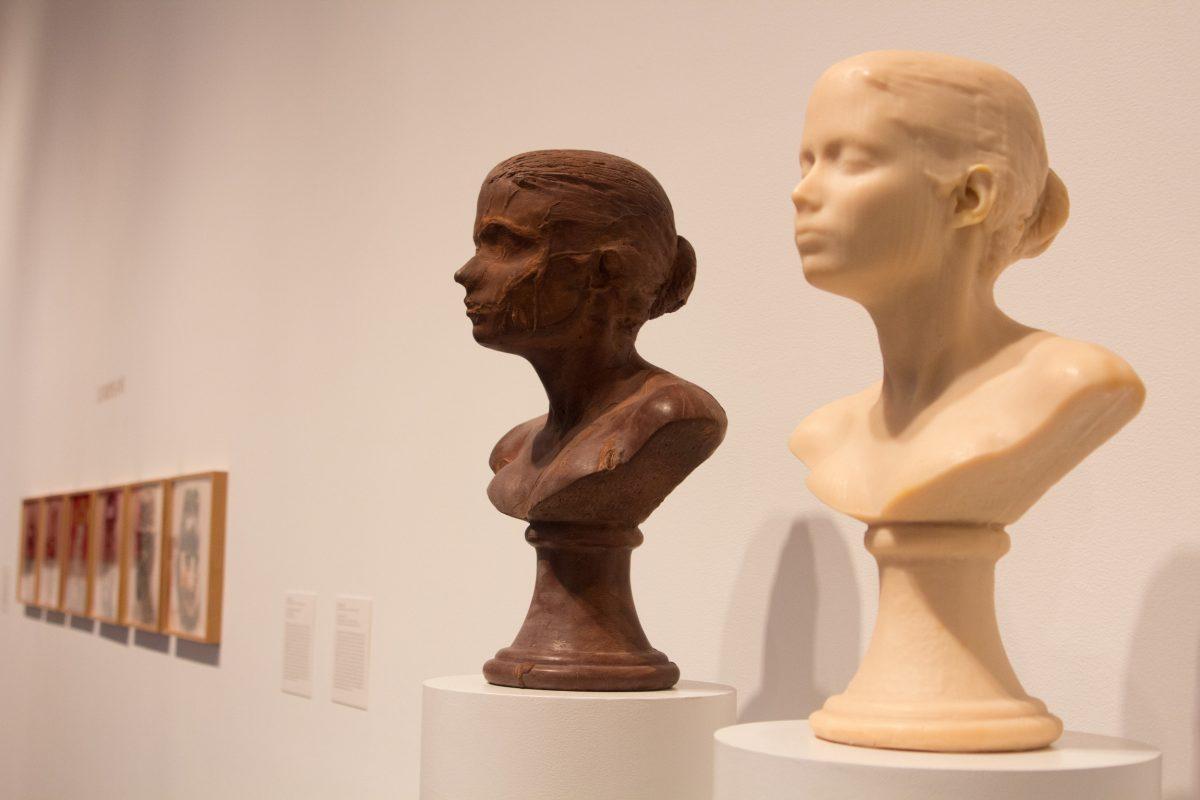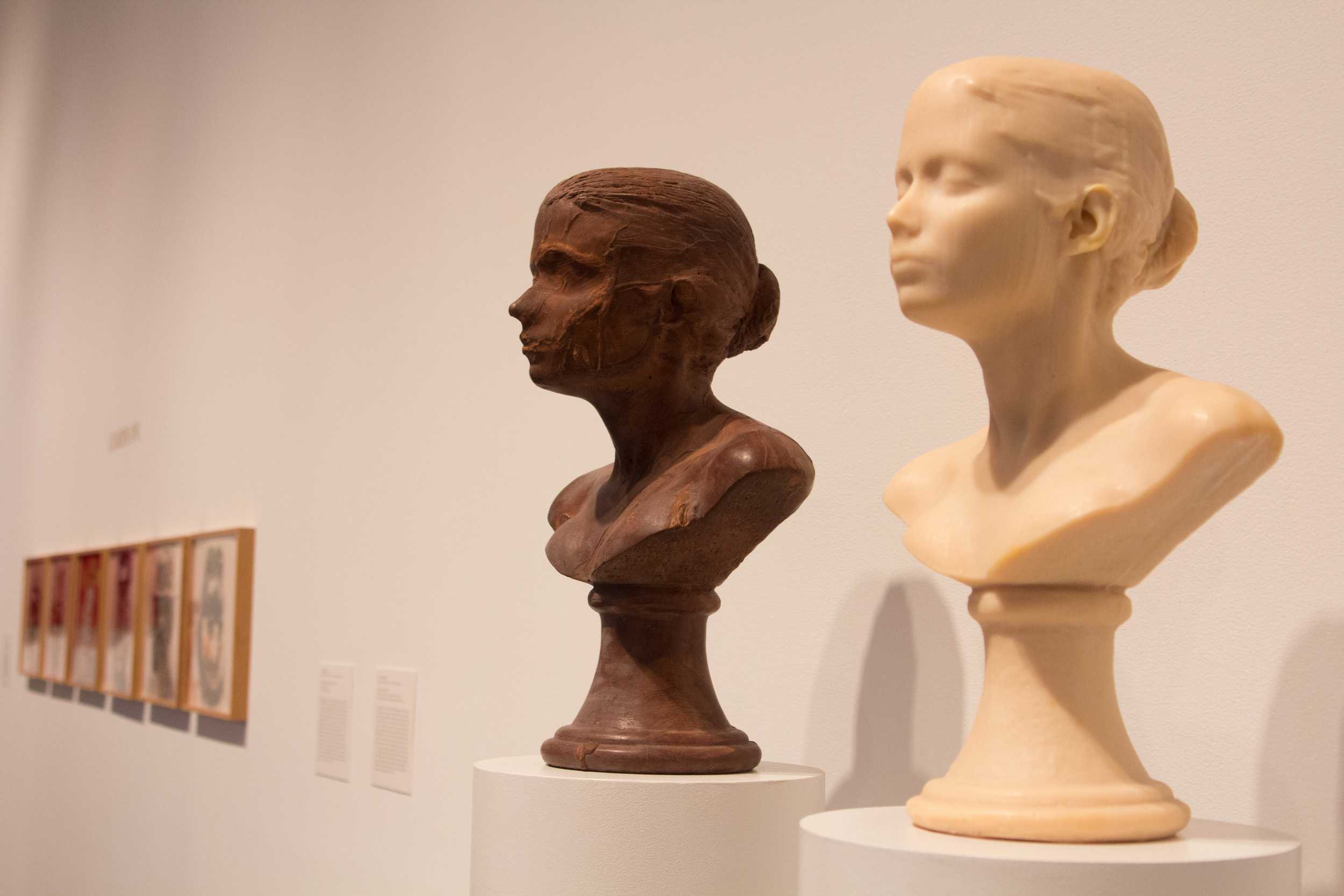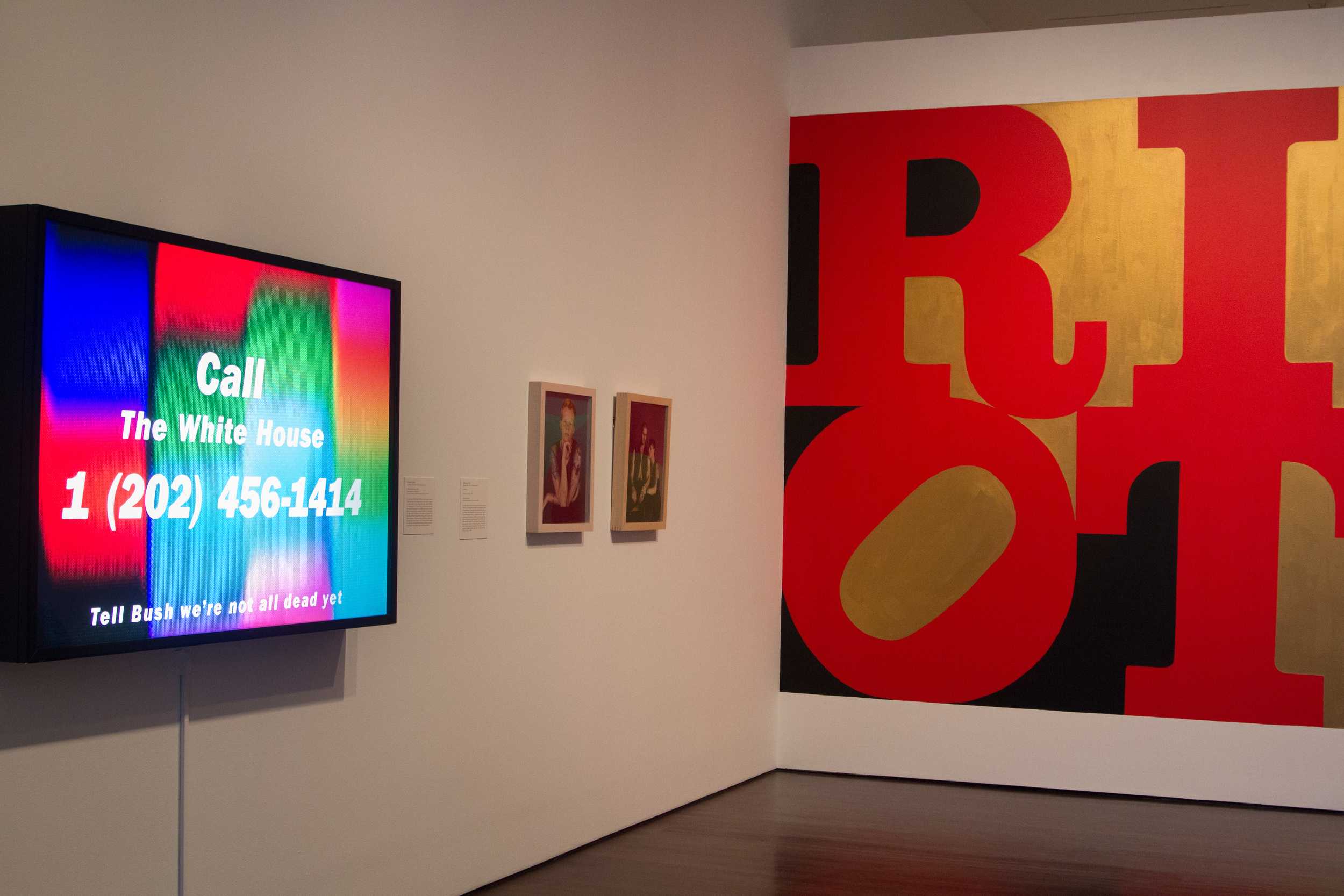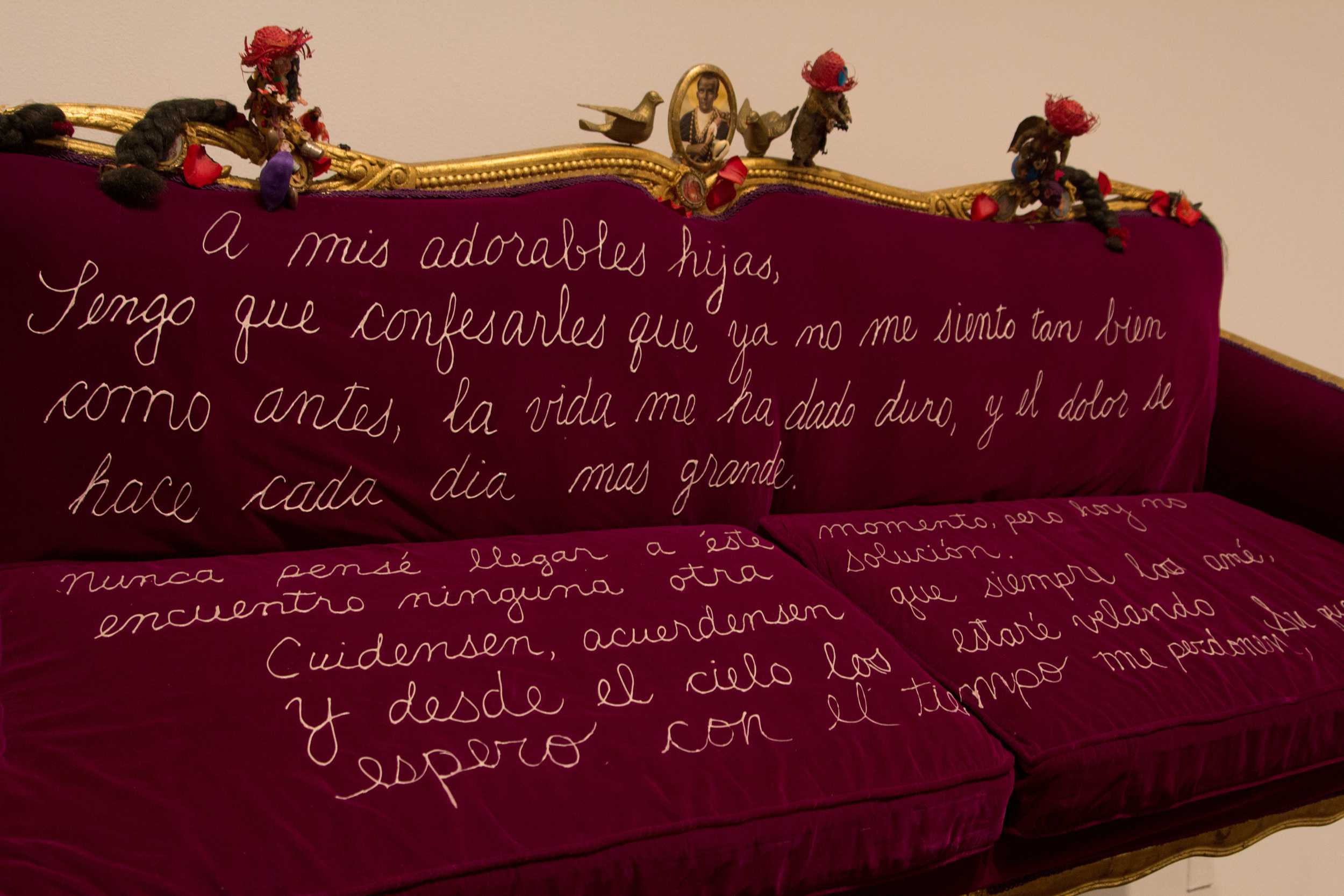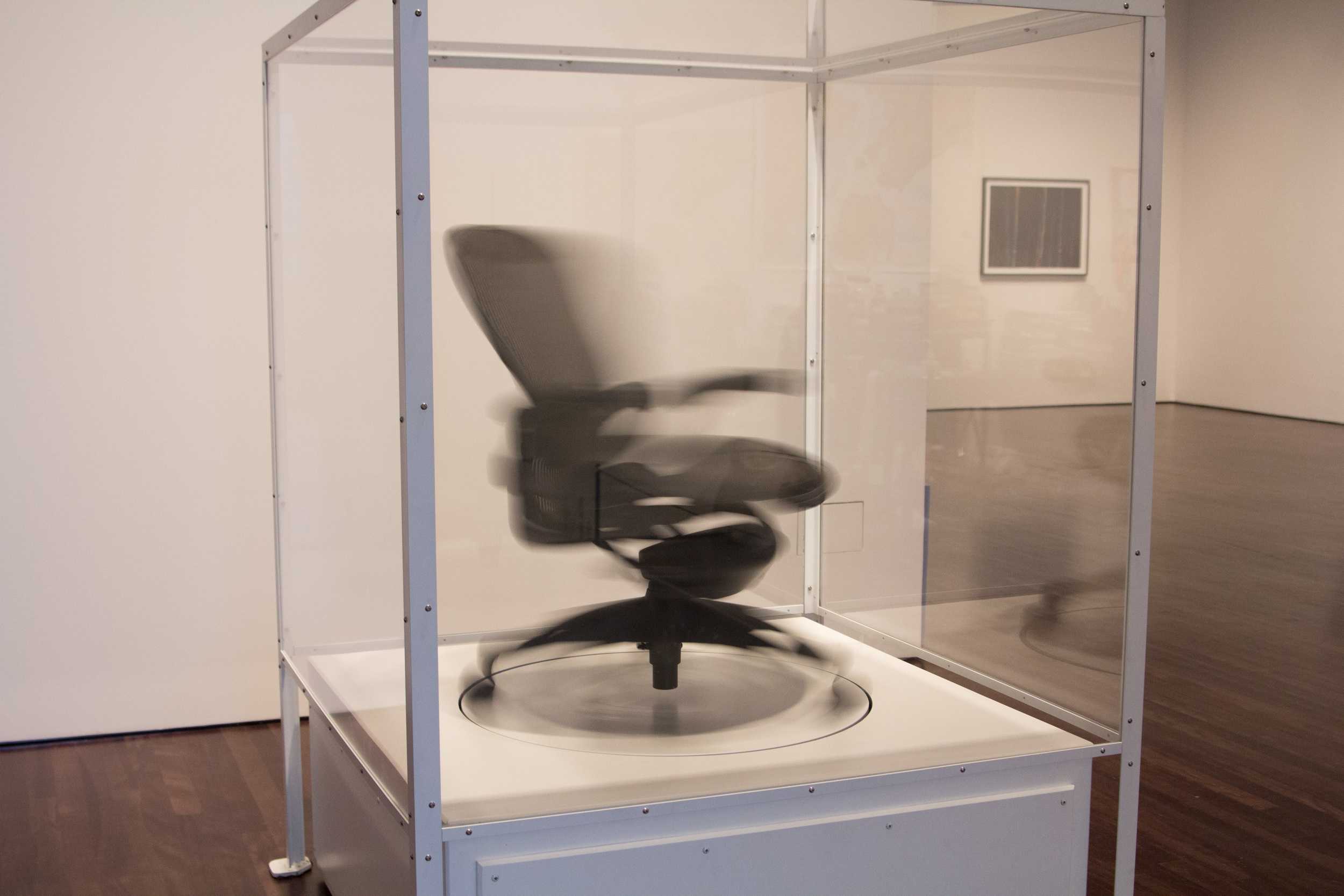“Lick and Lather,” self-portraits by Janine Antoni
Tens of thousands of silver-wrapped lemon candies shine under the gallery lights, covering about 160 square feet of the Blanton Museum of Art’s hardwood floor. From afar, the untitled piece by Felix Gonzalez-Torres is almost indecipherable, yet eye-catching as you first enter the Blanton’s new exhibit, “Come as You Are: Art of the 1990s.”
Story by Rachel Cooper
Photos by Kristin Evans
The exhibit is the first of its kind in the United States to feature art from the ‘90s in a historical context. The gallery, which features art from 1989 through 2001, displays almost every medium imaginable. Pieces range from standard photos and paintings to saliva-sculpted chocolate, soap busts and interactive websites.
“Come As You Are” exhibits art from 1989 to 2001.
The exhibition, which originally premiered in the Montclair Art Museum in New Jersey, is supplemented with existing ‘90s art from the Blanton. “[The exhibit] was something that was really in line with stuff that we already do and that we could contribute a little bit of our own flair to,” says Tessa Krieger-Carlisle, Blanton public relations and marketing manager. “We have a very expansive temporary exhibition space, so we were able to expand upon the presentation of the exhibition at Montclair [with] a section on the AIDS crisis.”
Three themes organize the show — identity politics, the digital revolution and globalization. Identity is represented most prominently through pieces dealing with various social issues including gender identity and sexuality, femininity, masculinity and ethnic stereotypes. One of the most striking works about identity comes from Puerto Rican artist Pepón Osorio. He paid tribute to immigrant families by painting a red velvet couch with an immigrant mother’s suicide note to her daughters.
“A Mis Adorables Hijas” by Pepón Osorio
The anti-establishment mood of the time period comes to life in Gonzalez-Torres’ untitled piece, also known as Placebo. His piece not only encouraged viewers to touch the art, but to pick from the thousand-plus pounds of candy,possibly shocking those who haven’t read the description. This self-destructive concept serves as a metaphor for the loss felt during the HIV/AIDS epidemic that peaked in the mid-nineties and is one of many pieces featured on the topic.
Artist Félix González-Torres, welcomes viewers to take a piece of the work, wrapped candies, in his piece “Untitled (Placebo).”
The digital revolution and globalization sections of the gallery have a blurred distinction, as the advent of the internet is intertwined with the rapid expansion of globalization. Due to new technology, art is readily available to the masses on a global scale. A video series of an artist acting as different characters is set on loop in the exhibit, demonstrating a precursor to YouTube culture.
Many of the issues that are expressed in the art are still ongoing, such as a series of paintings depicting police brutality of minorities. “Nothing’s really been corrected in society in the past 20 years, and the art represents that,” electrical engineering freshman Kristin Erkman says. “The message, I think, was to reflect on history, especially because those issues are still very prevalent in society.”
At the end of the gallery, an office chair spins continuously at high speeds, representing the “dizzying” period. All of the factors that made up the ‘90s can seem chaotic when put together, but the Blanton organized the exhibit in a cohesive and meaningful way. “I thought the exhibit really expressed and demonstrated the uniqueness of the ‘90s,” biochemistry freshman Anna Jendrezy says. “It’s a really awesome exhibit and I highly recommend it to anyone.”
“The Siege Perilous,” a spinning chair installation by Glenn Kaino
The exhibit runs through May 15 and is free to any University of Texas at Austin student with their ID. “We hope that it will have a very wide-ranging impact on a number of different people in a number of different ways,” Krieger-Carlisle says. “For some people it’s going to be a learning experience because they were growing up in the ‘90s. For some people they remember the art from the 1990s like it was yesterday. We think that it will be inspiring to visitors and that they will be exposed to some of the really complex conversations that were taking place through art during the 1990s.”































